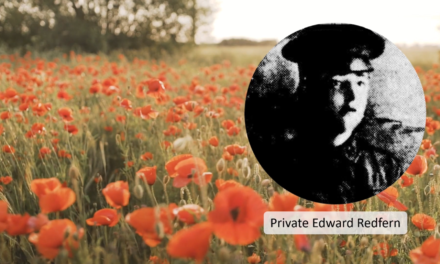Harnessing the Power of ChatGPT: A Versatile Tool
In the rapidly evolving landscape of artificial intelligence, ChatGPT by OpenAI has emerged as an invaluable tool for family historians, revolutionising various aspects of research, analysis, and storytelling. With its remarkable ability to generate human-like text, ChatGPT offers a wide range of applications for family historians, from assisting in writing engaging narratives to aiding in data analysis, transcription, translation, and more. To make the most of this versatile tool, it is crucial to understand and apply certain principles tailored to the family history domain. In this blog post, we explore seven key principles for effectively utilising ChatGPT in different facets of family history research and storytelling.
Principle 1: Words, Not Facts
Blaine Bettinger, (The Genetic Genealogist), repeats the mantra, “Words, not Facts” to remind genealogists what ChatGPT is designed for. As a large language model, ChatGPT excels at producing words rather than being relied upon for factual accuracy. By restricting and constraining ChatGPT through careful crafting of prompts, genealogists can generate an endless amount of useful, and indeed accurate text. For example, family historians can utilise ChatGPT to craft captivating narratives about their ancestors from a given timeline, generate ideas and develop outlines to produce engaging presentations, draft an email to a DNA match or write a blog post about a recent discovery in their research.
Principle 2: It’s not a Google Search
ChatGPT should not be treated as a substitute for a search engine. It is designed to generate text based on the provided prompts, not to retrieve specific information from the web. In fact, it should be remembered that it is not connected to the internet but rather uses the data it has been trained on to provide a response. Rather than asking direct questions, frame your prompts in a way that stimulates a creative response. If you do want it to use data, explicitly provide it by pasting it as part of the prompt. Retyping a badly formatted newspaper article from online newspaper repositories such as Trove, creating a table of DNA matches copied and pasted from commercial company result pages or even writing a short biography using given facts are effective ways to utilise the power of ChatGPT, rather than asking it a question that your favourite search engine can quickly answer.
Principle 3: It’s All About the Prompt
Crafting a clear and precise prompt is crucial for obtaining the desired output from ChatGPT. The model generates responses based on the context it receives, so make your prompts specific and focused. Include relevant details and provide clear instructions, guiding ChatGPT toward the desired result. By investing time in creating thoughtful prompts, you can enhance the quality, relevance and indeed accuracy of the generated response. Providing sufficient information about your ancestor, limiting ChatGPT to a certain number of words, specifying the type of output you require are all examples of crafting effective prompts. Note, a prompt can be several sentences long and shorter is not always better and sometimes it can be useful to give instructions in a list rather than in extended prose.
Principle 4: Choose Your Verbs Wisely
ChatGPT is a do-er and works to respond to provided prompts. Verbs, and their choice of, are therefore crucial to getting the required response. Pay close attention to the verbs you employ. Use strong, action-oriented verbs that align with the desired outcome and realise that some verbs, although quite similar can produce very different results. For example, asking ChatGPT to reformat an obituary will generate a completely new piece of text while retyping the same obituary will do just that, using the exact words of the original text. It can be helpful to think about the role you wish ChatGPT to perform and then associate appropriate verbs with that role. For example, a data analyst may sort, filter or organise. A writer may draft, write or outline while a researcher may identify, summarise or create a timeline.
Principle 5: New Chat for Each Task
It is highly recommended to start a new chat session for each new task. By doing so, you ensure that the model doesn’t retain context or biases from previous conversations. Starting fresh for each task allows you to maintain clarity and focus, improving the relevance and coherence of the generated content, leading to more accurate and contextually appropriate responses. Sometimes, if the desired outcomes aren’t forthcoming, it can also be worthwhile to start again with the same task, employing different verbs and completely rewriting your prompts. Conversely, there is no need to repeat instructions unnecessarily as ChatGPT does build up an intelligence of its own during a task and you can refer to previous responses to further refine the response. For example, after asking ChatGPT to generate a list of 10 topics for a talk on Family History, you can then in the same chat, ask for a summary of each of the 10 topics and subsequently for a detailed outline of the generated topics.
Principle 6: Edit & Check
While ChatGPT can produce coherent text at blazing speeds, it is essential to review and edit the generated content or output. Read through the output carefully, checking for grammatical errors, clarity, and overall coherence. If you have asked it to analyse data, ensure that it has included all the data and not just a subset. As ChatGPT is not connected to the internet, sources are not able to be given, so correctly citing information needs to be undertaken. Very rarely will anything produced by ChatGPT be able to be used without some form of further editing or manipulation. But using the tool can certainly be a time saver in generating drafts and synthesising information quickly. Additionally, proofread any written text to ensure it aligns with your intended message and your individual voice and if not, specifying the voice and tone in the prompt can provide results closer to your expectations. It really is no different to any other tool used by family historians – always check, edit and re-check.
Principle 7: Massage and Manipulate
Very rarely will the first response by ChatGPT be exactly what you want. Through massage and manipulation, the results generated will become closer to your desired outcome. This massage and manipulation can include reworking the prompt, providing additional information, or clarifying your intention. This process is iterative and while it could be done in a single step, it is usually achieved by small, incremental changes and tweaks. Also, using the same piece of information for a variety of purposes can be a useful deployment of ChatGPT. For example, firstly retyping a badly formatted wedding newspaper article followed by listing the attendees and their relationship to the bride and groom, and subsequently identifying the locations mentioned in the article demonstrates the massage and manipulation process to achieve desired results.
By applying these seven principles, family historians can harness the power of ChatGPT across various dimensions of their research and storytelling endeavours. From crafting engaging narratives to conducting data analysis, transcribing interviews, translating documents, and more, ChatGPT offers a versatile set of tools to enhance the practice of family history. With these principles in mind, family historians can unlock new insights, share compelling stories, and preserve the rich tapestry of their family’s history for generations to come.











Excellent article providing clear guidance for family historians. Thank you Andrew.
Thanks so much Carmel & pleased you found it useful.
Thanks! Great tips for using ChatGPT, not just for historians. Could you please share how do you use it for transcribing oral recordings?
Thanks Wendy. For transcribing oral recordings I would use a speech to text tool (eg Google docs or specific apps) then copy the transcription into ChatGPT to clean it up and remove errors etc. Hope this helps.
Great article thanks, I am just discovering ChatGPT and these tips are really helpful.
Thanks Sarah. I am about to update some of these as the tools have changed a little and some of these principles need to be reworked. Happy exploring with ChatGPT and AI tools.